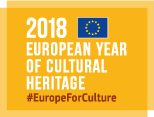EHRI Collection Graph
Challenge: WHY the innovation has been developed? What problem is addressed and why has not been not solved before?
Archival sources documenting the Holocaust are highly fragmented and dispersed across more than 1,900 archives, libraries, museums and other cultural heritage institutions in Europe and beyond. Such dispersal has so far rendered transnational, comparative and digital approaches to Holocaust research difficult. It is the main mission of the European Holocaust Research Infrastructure (EHRI) project to virtually integrate information about such physically dispersed sources in the EHRI Online Portal (https://portal.ehri-project.eu). Such pan-European integration of sources is challenging both because of the scale of their fragmentation and dispersion, and because of their inherent complexity: Holocaust sources are characterised by deep hierarchies, complex provenances and semantic heterogeneity, and are typically not catalogued according to international standards. As a consequence standard data integration approaches do not provide a good fit to our data domain.
Solution: WHAT the solution is about? HOW it goes beyond the state of the art?
Technically our main innovation lies in the usage of Graph technology to the challenge of integrating and enriching information about heterogeneous, dispersed and fragmented archival sources documenting the Holocaust. While graph databases have a long pedigree in social media applications, EHRI was one of the first adopters in a cultural heritage setting. We are using a Neo4J graph DB as a store that can be accessed by researchers via the EHRI Portal and two APIs. Our work shows that the graph paradigm excellently fits the complex archival data domain, and allows us to flexibly model information. In particular, the EHRI collection graph integrates both concrete and “virtual” representations of archival hierarchies and is therefore able to capture physical and provenential characteristics of dispersed archival collection. Utilising graph technology has allowed EHRI to integrate information about more than 230,000 archival units, physically held at more than 588 cultural heritage institutions located in 33 countries into its Online Portal. This unprecedented aggregation of Holocaust-related archival data allows for the first time access to sources at a pan-European level.
End-users and examples of uses: WHO will beneficiate/ is beneficiating from the solution? WHERE and HOW the solution has been adopted? How will impact people or end-users? Add as more as possible examples of market and society uptakes
The primary users of the EHRI Portal are Holocaust researchers. By integrating information about Holocaust sources across Europe and beyond, EHRI enables unprecedented access to archival material. It is fast becoming an essential tool for anyone wishing to study the Holocaust, and is indispensable for any attempt to approach the Holocaust from a transnational perspective. The EHRI Online Portal was launched in April 2015, and has been widely taken up by the research communities. It currently averages more than 10,000 user sessions per month. However, the Holocaust has relevance far beyond the walls of academia, and the EHRI Portal has attracted interest from genealogists, local historians and the interested public. The Holocaust is foundational to the European project, and meaningful remembrance of the event across European societies is crucial for social, cultural and political reasons. Holocaust archives are part of our shared European cultural heritage, and by allowing anyone with an internet connection access to properly documented and contextualised information about such archives, EHRI helps to ensure that the Holocaust’s lessons are never forgotten. Finally, our use case of how to integrate complex archival data from many holding repositories by utilising graph technology has attracted the interest from several cultural heritage institutions in other domains that wish to integrate their heterogeneous databases.
Future possibilities: Future market perspectives when the innovation will be fully available or in use
The EHRI collection graph has been implemented in a fully working system – the EHRI Online Portal – and, as such, already is fully in use. We will further enhance and refine the Portal over the coming months both in terms of content and functionality. However, and as already mentioned above, our approach to data integration based on graph technology has potential applicability beyond the Holocaust archive domain. The problem that our innovation addresses – how to integrate highly dispersed, fragmented and heterogeneous archival data – is one that is faced by many cultural heritage institutions. While we have already undertaken significant outreach activities to disseminate the benefits of our innovation, we are planning to intensify such activities in the medium term to ensure maximal impact and uptake of our work elsewhere.
Media coverage
for instance, https://horizon-magazine.eu/article/holocaust-research-more-important-ever-mep_en.html; https://www.welt.de/print/die_welt/kultur/article138827879/Wissen-ueber-das-Menschheitsverbrechen-wird-recherchierbar.html
References for more information (eg. website, social media)
Contacts:
Reto Speck (Deputy Director EHRI) (reto.speck@kcl.ac.uk)
Application sectors:
- Enabling digital technologies for CH
Objectives:
- Knowledge sharing and education
RRI Dimensions:
- Science Education
- Open Access
- Governance
Communities:
- Shared management of cultural heritage

